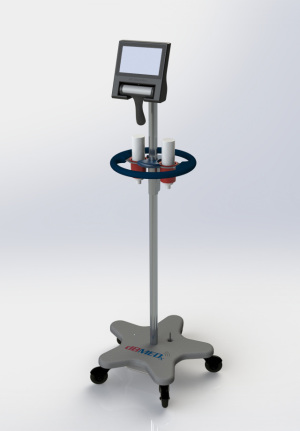by
Lauren Dubinsky, Senior Reporter | January 08, 2015
dBMEDx, a wireless medical device company, announced earlier this week that it received FDA approval for its new bladder scanner, BBS Revolution. The device will help hospitals as they search for ways to avoid catheter-associated urinary tract infections (CAUTI).
The scanner non-invasively measures bladder volume so physicians can decide whether a patient needs a urinary catheter. It works by combining ultrasound technology with image processing electronics and software.
Bladder scanning is more important than ever now that Medicare is handing out penalties for high CAUTI rates as part of the Medicare hospital-acquired condition (HAC) reduction program, which started October 1. CMS reported in mid-December that over 700 hospitals will receive a 1 percent reduction in payments by fiscal 2015 and estimated that overall payment will decrease by about $330 million.



Ad Statistics
Times Displayed: 1
Times Visited: 0 You can’t fix what you can’t see. With enhanced visibility and monitoring of your devices and network, ReadySee™ can help you stay ahead of issues before they disrupt patient care.
"It's so timely because now you have 720 hospitals that have to take action and it's going to be devices like this that can play right into that and give them a tool they can deploy, and have a meaningful impact on these infection rates," David Shine, CEO of dBMEDx, told DOTmed News.
Its ease of use is what sets it apart from other bladder scanners on the market. "It's much easier to use — with the current class of devices it's easier to get the wrong number, and you usually have to do it four or five times to get the right number," said Shine.
This new device has an edge over current technology that gives a very narrow view of the bladder. BBS Revolution provides a much wider view. Nurses are usually the only ones who can use the conventional technology but now BBS Revolution will also allow technicians to perform the procedure.
During the procedure, a health care professional simply places the scanner over the patient's abdomen and presses a button to measure the bladder volume. The volume is then wirelessly transmitted to the display screen.
"If it's used, these devices can reduce infection rates. But the problem is if it's not being used, because it's difficult to use. Then it undermines the ability of the device," said Shine.
BBS Revolution will be on display at the upcoming AORN Surgical Conference & Expo in March and the American Urological Association annual meeting in May.

